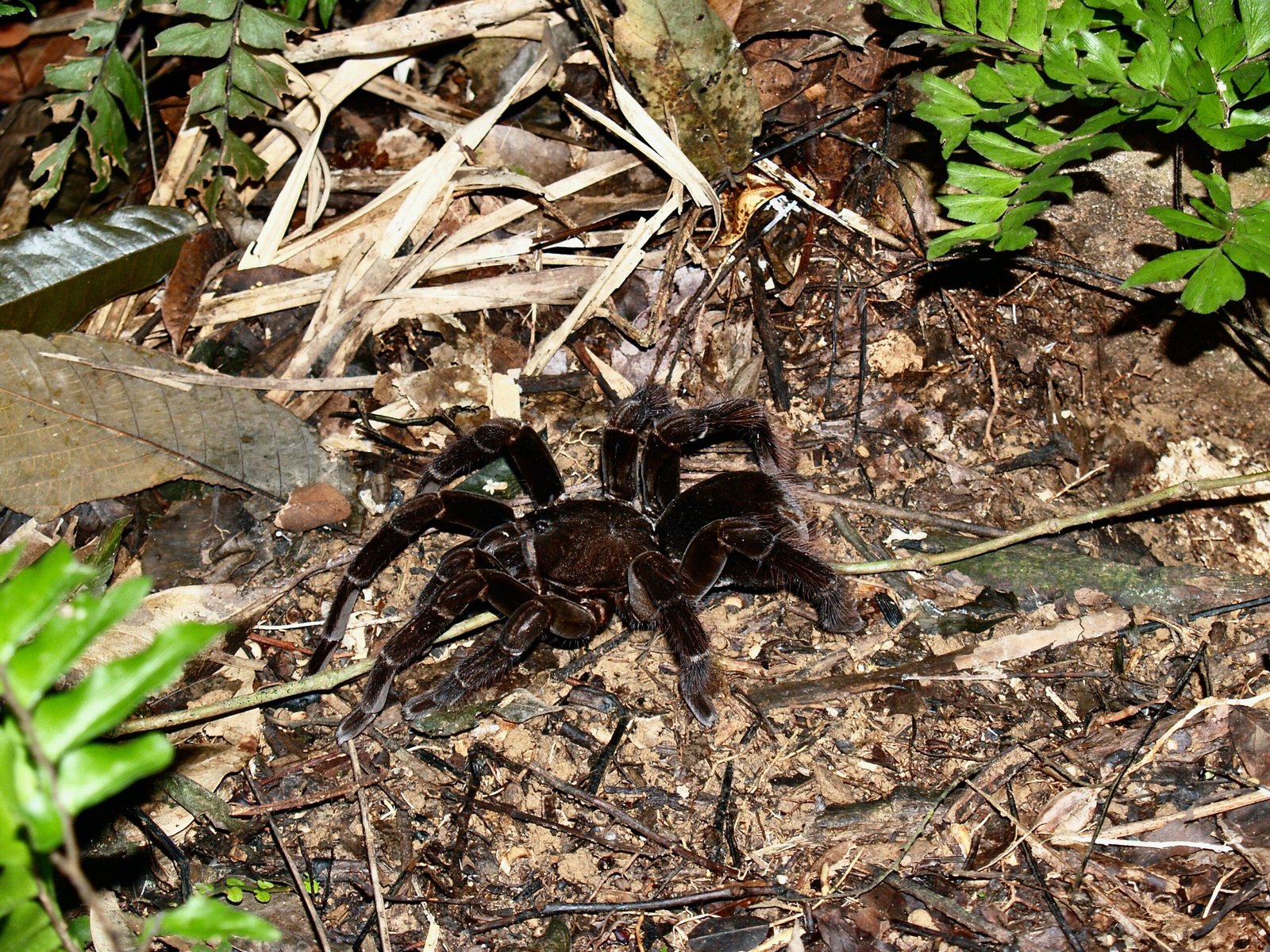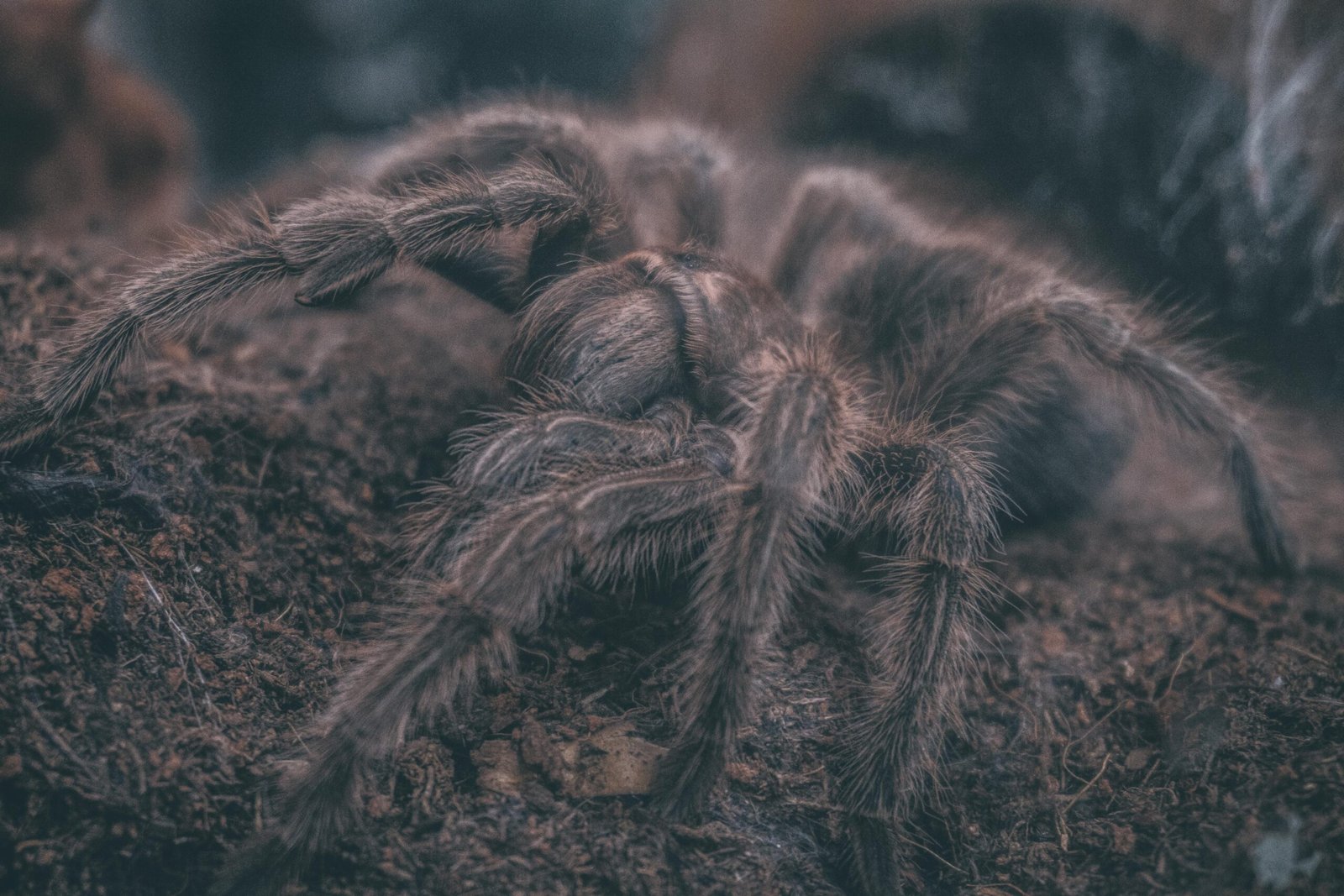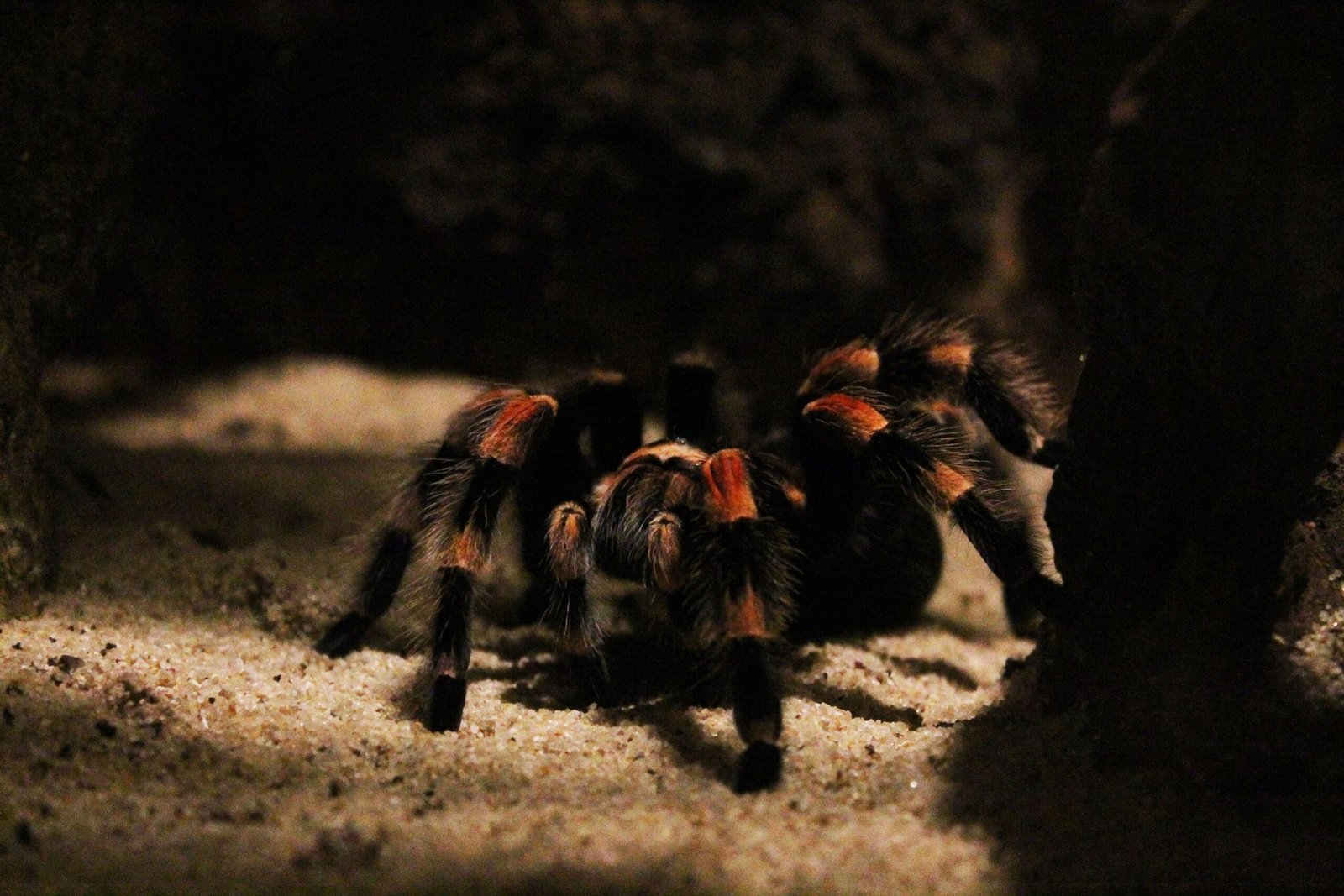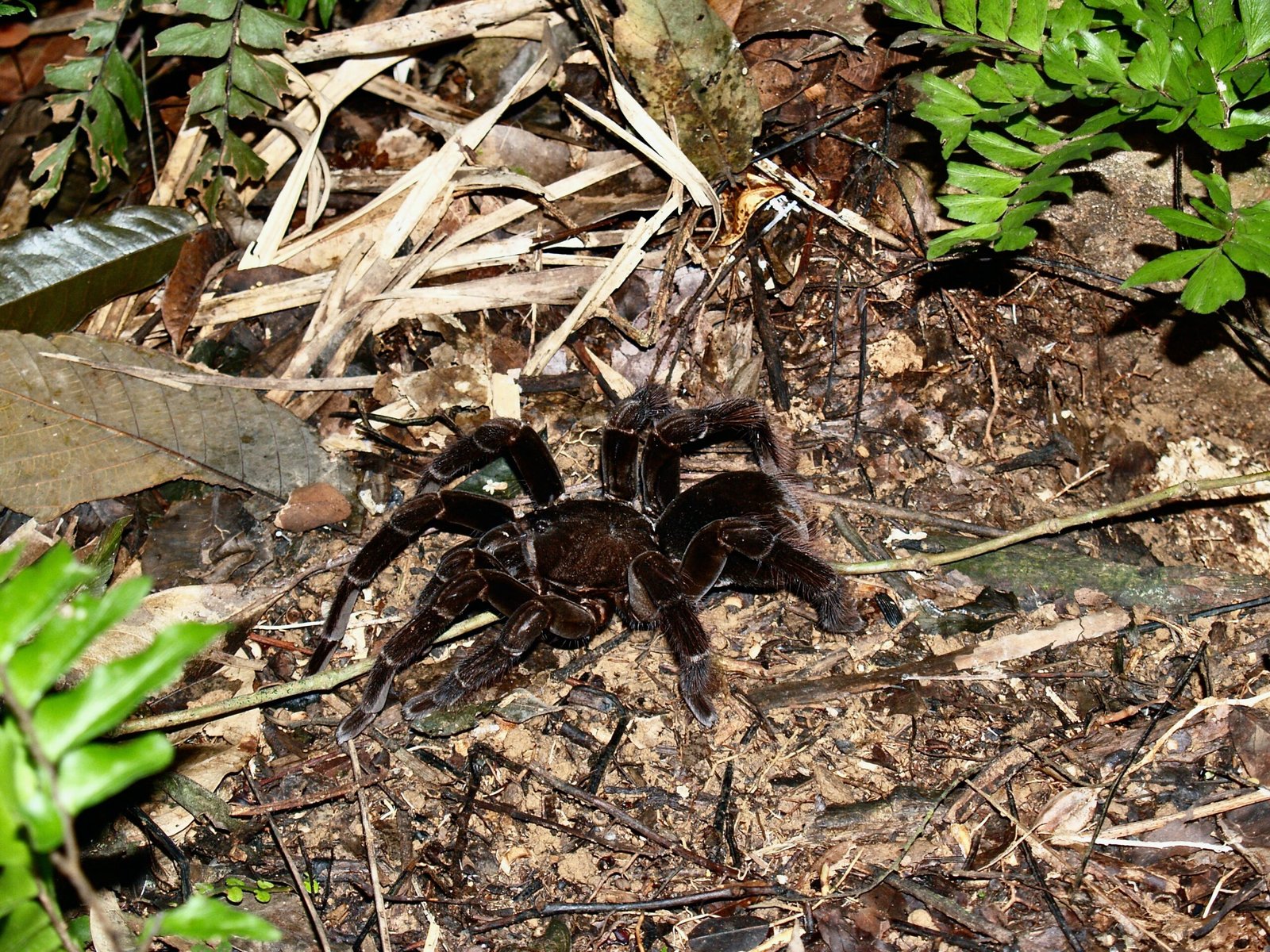Have you ever wondered how to handle and care for the fascinating Pinktoe tarantula with its unique pinkish feet? In this article, we will guide you through the steps of providing the necessary care and attention to these enigmatic creatures. From creating the perfect habitat to understanding their feeding habits, you’ll discover all the essential information you need to keep these captivating spiders happy and healthy. So, let’s delve into the world of the Pinktoe tarantula and learn how to provide the best care for this intriguing arachnid!
H2: Pinktoe Tarantula Overview
The Pinktoe tarantula, scientifically known as Avicularia avicularia, is a stunning and fascinating species of tarantula. Its name comes from the distinctive pinkish coloration found on its feet, which adds a touch of vibrancy to its overall appearance. This article will guide you through the various aspects of handling and caring for these enigmatic creatures, ensuring they thrive in your care.
H3: Basic Description
The Pinktoe tarantula is a medium-sized tarantula, with females typically growing to around 5 inches in legspan, while males are slightly smaller, measuring around 4 inches. They have a slender body covered in short, velvety hair, giving them a soft and elegant appearance. The unique feature of this species is the pink to reddish coloration on their feet, which sets them apart from other tarantulas. With their stunning beauty and intriguing behavior, Pinktoe tarantulas make for captivating pets.
H3: Natural Habitat
Native to the tropical rainforests of South America, Pinktoe tarantulas inhabit trees and build intricate webs for hunting prey. They are arboreal species, meaning they spend most of their time climbing and hiding in the foliage. The warm and humid conditions of their natural habitat provide an ideal environment for their survival. Recreating these conditions in captivity is crucial for their health and well-being.
H3: Unique Characteristics
Apart from their pink feet, Pinktoe tarantulas possess several other unique traits. They are known for their ability to spin intricate and beautiful webs, using them not only for capturing prey but also for creating shelters. These tarantulas are also agile climbers, utilizing their sharp claws and well-developed leg muscles to navigate the branches in their habitat. Their docile temperament and vibrant appearance make them a popular choice among tarantula enthusiasts.
H2: Setting Up a Suitable Enclosure
Creating an appropriate enclosure is vital for the well-being of your Pinktoe tarantulas. Consider the following factors when setting up their habitat.
H3: Tank Selection
Choosing the right tank size is essential to ensure your Pinktoe tarantula has ample space to explore and climb. A vertical terrarium or an arboreal enclosure is ideal for this climbing species. A tank with dimensions of at least 12x12x18 inches will provide enough room for their arboreal needs.
H3: Substrate
For Pinktoe tarantulas, a substrate that mimics the forest floor is best suited. Mix peat moss and coconut fiber to create a loose, well-draining substrate, allowing your tarantulas to burrow if they wish. It is crucial to keep the substrate moist but not overly saturated, as they require a humid environment to thrive.
H3: Temperature and Humidity
Maintaining appropriate temperature and humidity levels is crucial to ensure the health and happiness of your Pinktoe tarantulas. Keep the enclosure temperature between 75-85°F (24-29°C), with a humidity level of 70-80%. Use a hygrometer and a thermometer to monitor these conditions regularly.
H3: Ventilation and Lighting
Proper ventilation is necessary to maintain fresh air circulation within the enclosure. Install vents or ensure the tank has suitable air holes to allow for adequate airflow. Natural lighting from a nearby window is generally sufficient for Pinktoe tarantulas, but avoid direct sunlight to prevent overheating.

H2: Feeding and Nutrition
Providing a suitable diet is crucial for the health and growth of your Pinktoe tarantulas. Follow these guidelines to ensure proper feeding.
H3: Dietary Requirements
Pinktoe tarantulas are insectivores, and their diet mainly consists of live prey. Feed them a variety of appropriately-sized insects, such as crickets, roaches, and fruit flies. Gut-load the prey insects with nutritious food before offering them to your tarantulas to ensure they receive optimal nutrition.
H3: Choosing Prey
Select prey items that are smaller than the body size of your tarantula. Offer a few insects at a time, observing their feeding behavior. If the prey is not consumed within 24 hours, remove it from the enclosure to prevent it from causing stress or harm to your tarantula.
H3: Frequency of Feeding
Young Pinktoe tarantulas should be fed every 2-3 days, while adults can be fed every 5-7 days. Adjust the feeding frequency based on your tarantula’s appetite and growth rate. Monitor their abdomen to ensure it remains plump, indicating a healthy feeding schedule.
H3: Supplementing with Vitamins
To ensure your Pinktoe tarantulas receive essential nutrients, consider occasionally supplementing their diet with a specialized tarantula vitamin supplement available at pet stores. Follow the recommended dosage instructions to prevent over-supplementation, which can be harmful to your tarantulas.
H2: Handling and Safety
While Pinktoe tarantulas are known for their docile temperament, handling them requires caution and attention to their safety needs. Here are some guidelines for handling them safely.
H3: Ideal Handling Conditions
Before attempting to handle your Pinktoe tarantula, create a calm and quiet environment. Ensure your hands are clean and free from any lotions or chemicals that may harm the tarantula. Proceed with handling only if your tarantula appears calm and is displaying relaxed body language.
H3: Tools for Handling
Consider using specialized tools, such as soft brushes or insect catchers, for gentle tarantula handling. These tools allow you to guide your tarantula in the desired direction without applying direct pressure or causing harm.
H3: Safety Measures
Always handle your Pinktoe tarantula close to the ground or over a soft surface to minimize the risk of falls. Avoid sudden movements or loud noises that may startle them. It’s essential to understand that while they are generally docile, they may still exhibit defensive behavior when they feel threatened. Respect their space and avoid handling if they show signs of stress or aggression.
H3: Handling Tips
When handling your Pinktoe tarantula, maintain a gentle and steady grip. Support their body weight with your hand or allow them to walk on your open palm if they feel comfortable. Never grab or squeeze the tarantula, as this can cause injury or stress. Gradually increase handling time as your tarantula becomes more accustomed to human interaction.

H2: Maintaining Optimal Health
Regular inspections and prompt identification of health issues are crucial for maintaining the well-being of your Pinktoe tarantulas. Follow these guidelines to ensure their optimal health.
H3: Regular Inspections
Regularly observe your tarantula’s behavior, appetite, and physical appearance. Look for any changes in their activity level, signs of injury, or abnormalities. Early detection of potential health issues can significantly improve the chances of successful treatment.
H3: Identifying Common Health Issues
The most common health issues in Pinktoe tarantulas include dehydration, mites, and fungal infections. Watch for signs such as desiccated appearance, excessive itching or grooming, and white or black patches on their body. If you notice any concerning symptoms, consult a veterinarian with experience in exotic pets.
H3: Common Treatments
Treatment for health issues in Pinktoe tarantulas often includes reevaluating and adjusting their enclosure conditions. Increasing humidity, providing fresh water, and adjusting the temperature may help resolve mild health problems. In case of severe or persistent issues, professional veterinary care should be sought.
H2: Molting and Reproduction
Molting is an essential process for the growth and development of Pinktoe tarantulas. Here’s what you need to know about molting and reproduction.
H3: Signs of Molting
Prior to molting, Pinktoe tarantulas may exhibit certain behaviors as a sign of preparation. They may refuse food, become less active, and spend more time in their hide area. The exoskeleton may also appear darker and lose its shine.
H3: Molting Process
During molting, the tarantula sheds its old exoskeleton and replaces it with a larger one. The process can take several hours or even days to complete, during which the tarantula is vulnerable and should not be disturbed. Ensure a quiet and undisturbed environment during this critical period.
H3: Reproduction and Breeding
Breeding Pinktoe tarantulas should only be attempted by experienced tarantula keepers, as it requires precise conditions and careful handling. Mating can be a risky process, and the female may become aggressive towards the male. Seek guidance from a knowledgeable breeder or specialist if you wish to pursue breeding.

H2: Socialization and Enclosure Decor
Creating a suitable and enriching environment for your Pinktoe tarantulas is essential to their well-being. Consider these aspects of socialization and enclosure decor.
H3: Keeping Pinktoe Tarantulas Together
Pinktoe tarantulas are generally solitary creatures and should be housed individually. They do not have strong social tendencies and can become aggressive towards each other if kept in close proximity. Provide each tarantula with its own enclosure to ensure their comfort and safety.
H3: Suitable Tank Decorations
To mimic their natural habitat, include branches and sturdy plants in the enclosure. Live or artificial plants can be used to create a lush environment for your tarantulas to climb and hide. Avoid using toxic or sharp objects that could potentially harm your tarantulas.
H3: Creating a Hide Area
Providing a suitable hide area is crucial for Pinktoe tarantulas, as it allows them to retreat and feel secure. Use hollow logs, cork bark, or purpose-built hiding spots to create cozy hideaways within the tank. Ensure the hide areas are appropriately sized for your tarantulas to comfortably fit.
H2: Common Myths and Misconceptions
Dispelling myths and misconceptions surrounding Pinktoe tarantulas is essential for understanding their true nature and proper care.
H3: Aggressiveness and Venomosity
Contrary to popular belief, Pinktoe tarantulas are generally not aggressive. They will rarely bite or display any hostile behavior unless they feel threatened. Their venom is mild and primarily used for subduing prey rather than being a threat to humans.
H3: Pink Feet Significance
The pinkish coloration on the feet of Pinktoe tarantulas is considered aesthetically pleasing but does not hold any particular significance or unique function. It is simply a characteristic that sets them apart visually from other tarantula species.
H3: Recommended Handling Methods
Handling Pinktoe tarantulas should be done with caution and only when necessary. While they are generally docile, every tarantula possesses its own temperament and stress tolerance level. It is recommended to prioritize observing and appreciating your tarantula’s behavior from a safe distance rather than attempting unnecessary handling.

H2: Dealing with Potential Challenges
As with any pet, Pinktoe tarantulas may present certain challenges. Here’s how to address them effectively.
H3: Aggressiveness and Defensive Behavior
While Pinktoe tarantulas are usually peaceful, there may be instances where they display defensive behavior. If you notice signs of aggression, such as rearing up or displaying raised front legs, it is essential to give them space and avoid provoking them further. Minimize interactions and focus on providing a stress-free environment.
H3: Escaping and Relocation
Preventing escapes is crucial to ensure the safety of both your Pinktoe tarantulas and yourself. Regularly inspect the enclosure for any gaps or loose fittings and secure them appropriately. If an escape does occur, remain calm and take measures to safely recapture the tarantula using a catch cup or similar method.
H3: Health Emergencies
In the event of a health emergency, such as an injury or sudden decline in health, contact a veterinarian experienced with exotic pets immediately. Avoid attempting self-diagnosis or treatment without professional guidance, as it may worsen the situation. Your veterinarian will provide appropriate advice and necessary interventions to ensure the well-being of your Pinktoe tarantula.
H2: Conclusion
In conclusion, caring for Pinktoe tarantulas requires attention to their unique needs and behaviors. By providing a suitable enclosure, offering a proper diet, handling with caution, and ensuring their overall well-being, you can enjoy the beauty and enigma of these captivating creatures. With the right care, your Pinktoe tarantula will thrive and continue to mesmerize you with its distinctive pinkish feet. Appreciate their natural beauty and the wonder they bring to your life as you embark on this rewarding journey of tarantula ownership.

